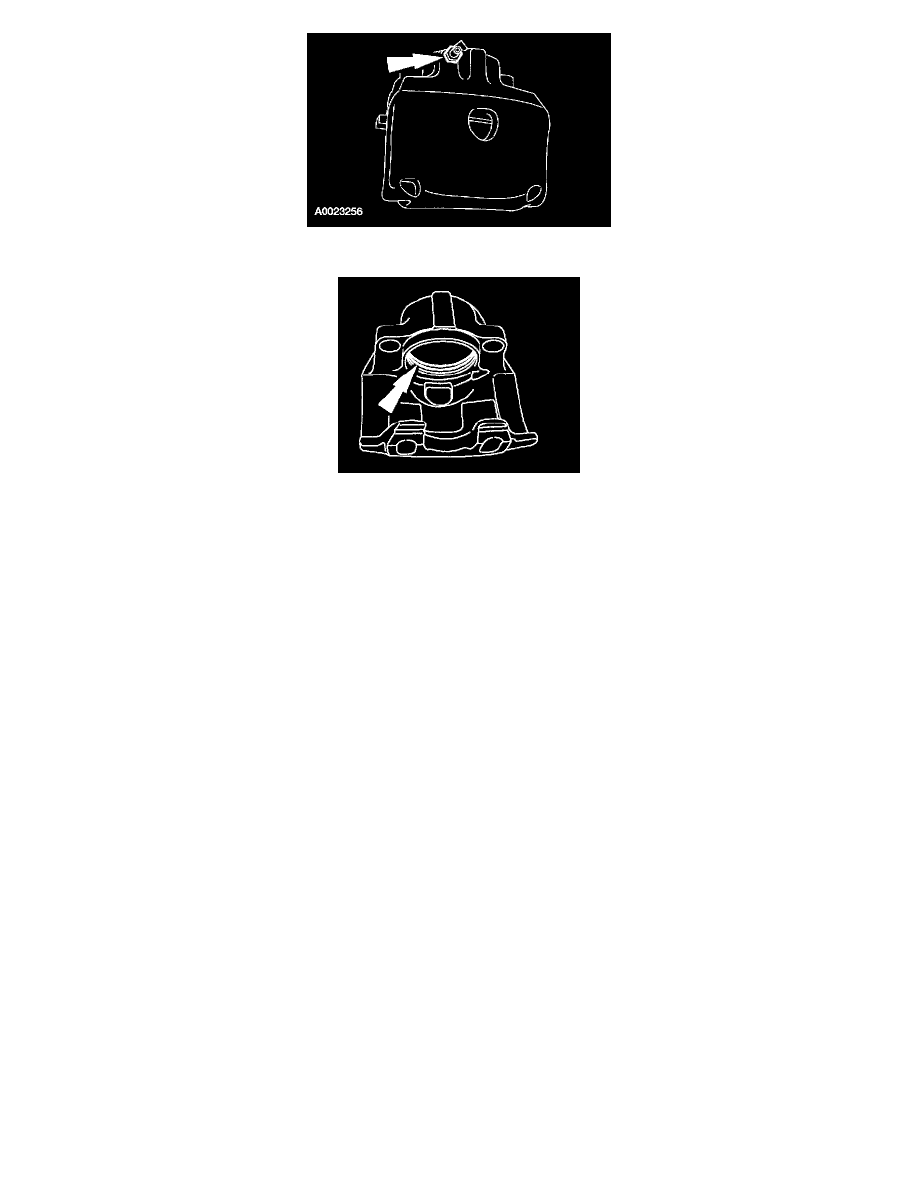Escape 4WD V6-181 3.0L DOHC VIN 1 Duratec (2003)

5. Remove the bleeder screw.
6. CAUTION: Use a plastic or wooden pick to remove the piston seal from the caliper bore. A metal tool may scratch or nick the seal groove, which
could result in a seal leak.
NOTE: Inspect the caliper bore for wear, rust or pits If any of these conditions exist, do not hone; a new caliper must be installed
Remove the piston seal.
Assembly
CAUTION: Do not use denatured alcohol to clean rubber components or assemblies that have rubber components.
Cleaning rubber components with denatured alcohol weakens the rubber and may result in failure of the component.
CAUTION: Never allow any petroleum product or mineral oil to contact the inside of a brake hydraulic system. Mineral oil and petroleum products
deteriorate the natural rubber seals used in brake hydraulic system. If a brake system becomes contaminated, it must be flushed with clean brake fluid
and all rubber seals and flex hoses replaced. Use High Performance DOT 3 Motor Vehicle Brake Fluid C6AZ-19542-AB or equivalent meeting Ford
specification ESA-M6C25-A, DOT 3.
NOTE: Be sure the seal is not twisted and is firmly seated in the caliper bore
NOTE: Clean all brake caliper components. All parts must be air-dried completely Coat all internal parts and piston seal with High Performance
DOT 3 Motor Vehicle Brake Fluid C6AZ-19542-AB or equivalent meeting Ford specification ESA-M6C25-A. DOT 3 before installation.
To assemble, reverse the disassembly procedure.
